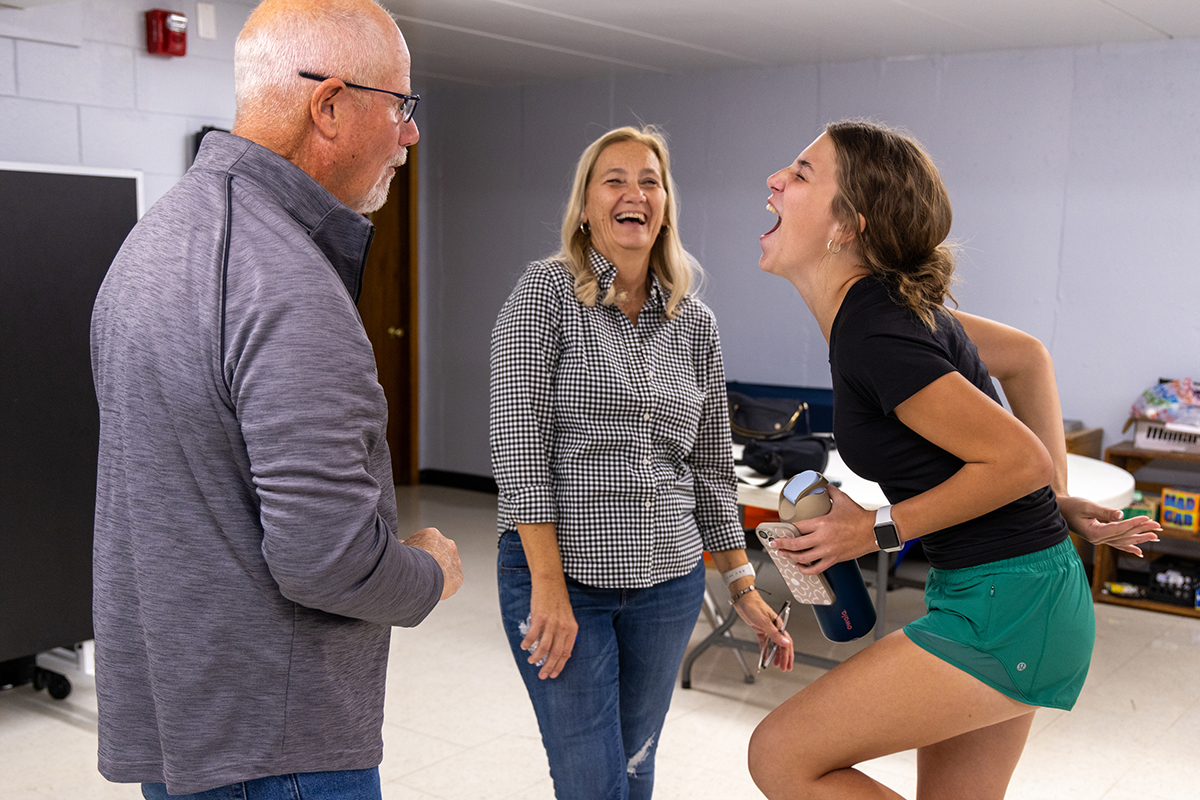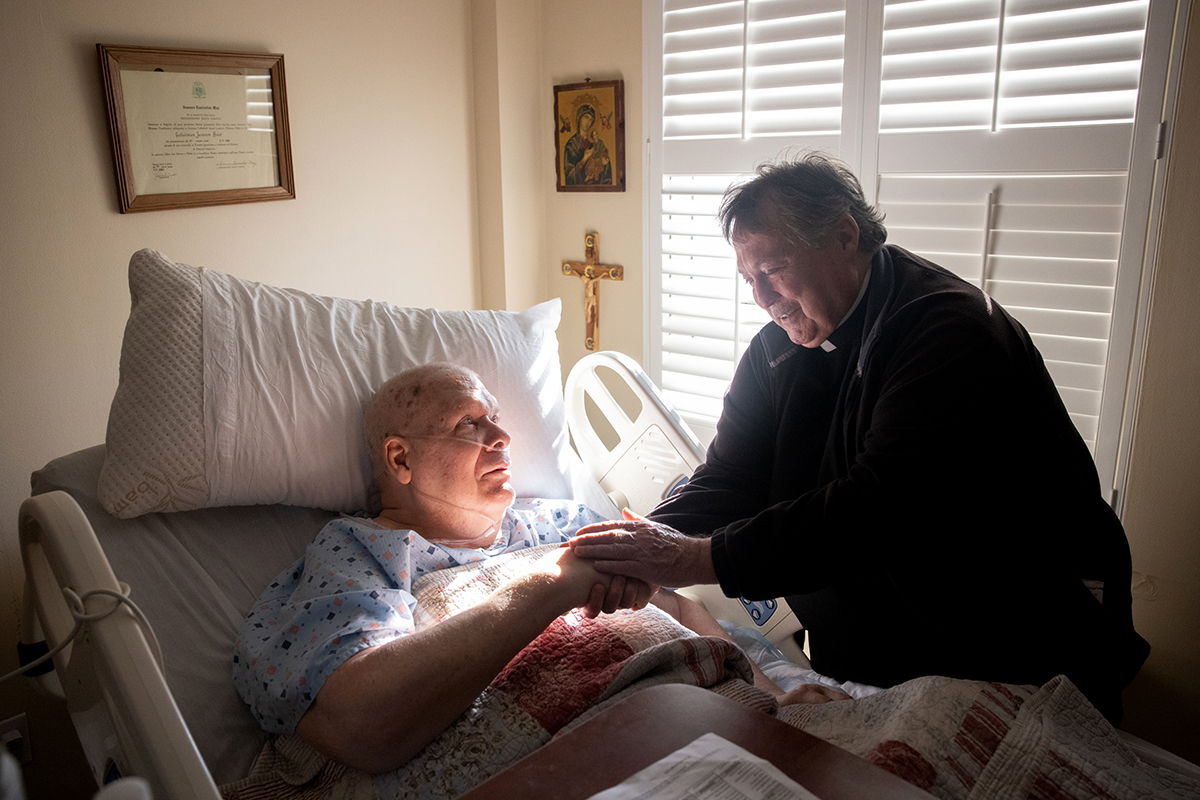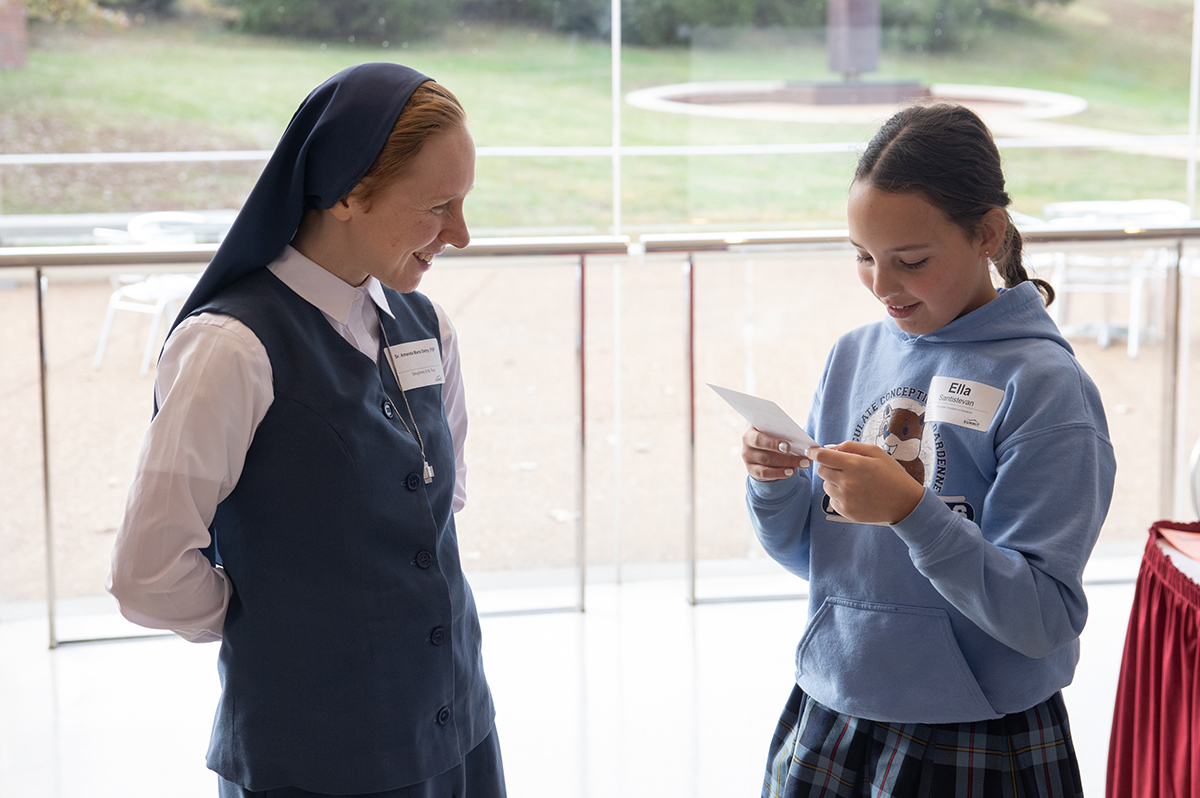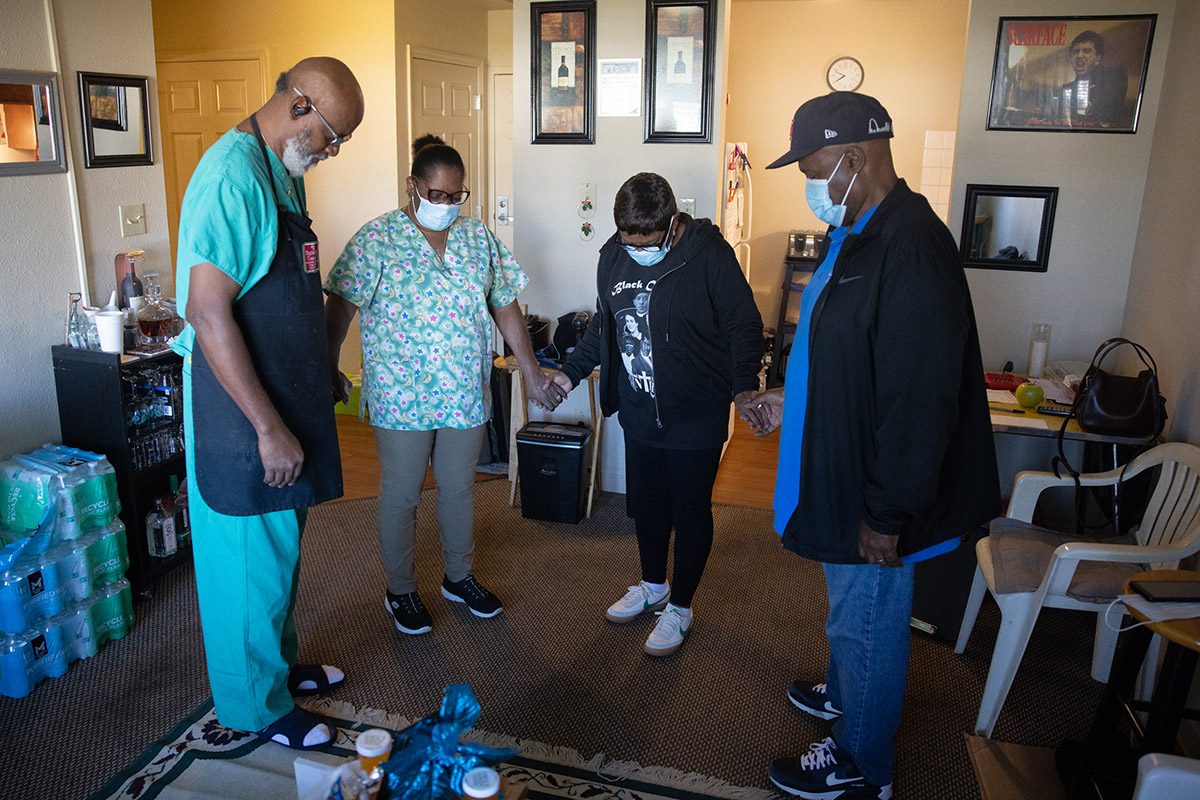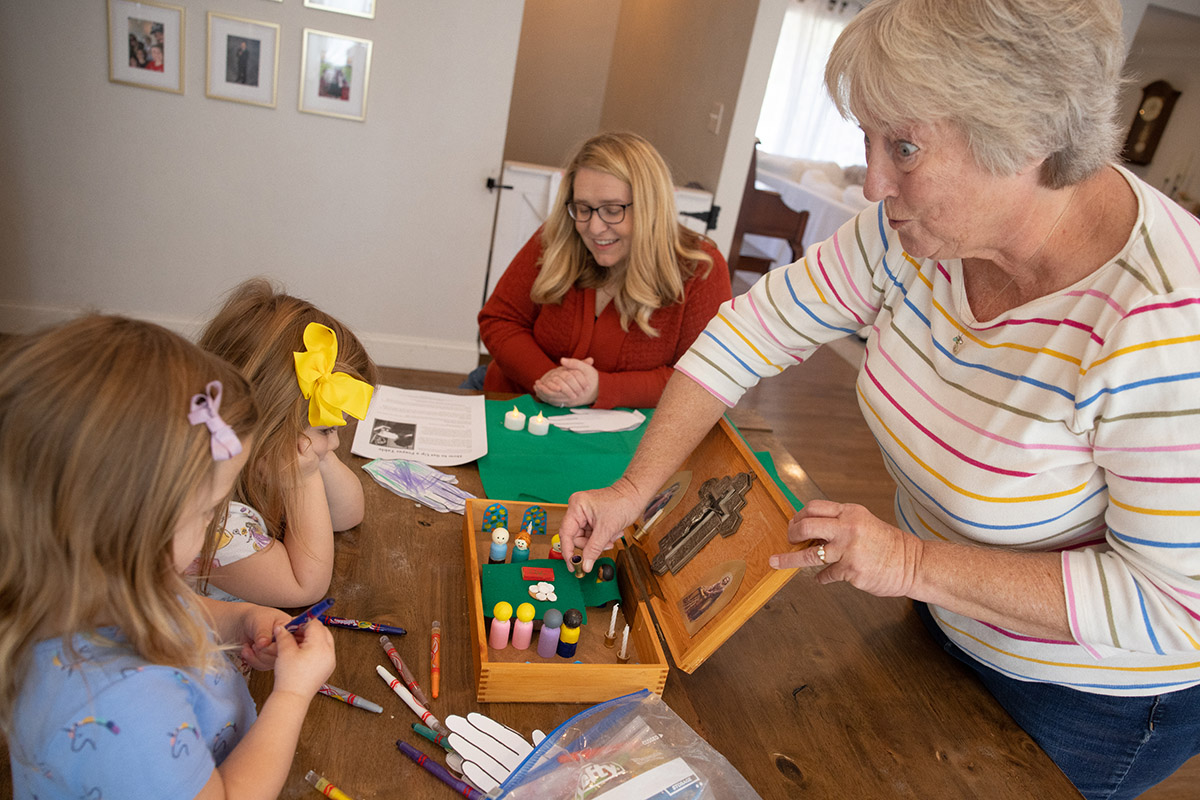‘Truly a treasure’
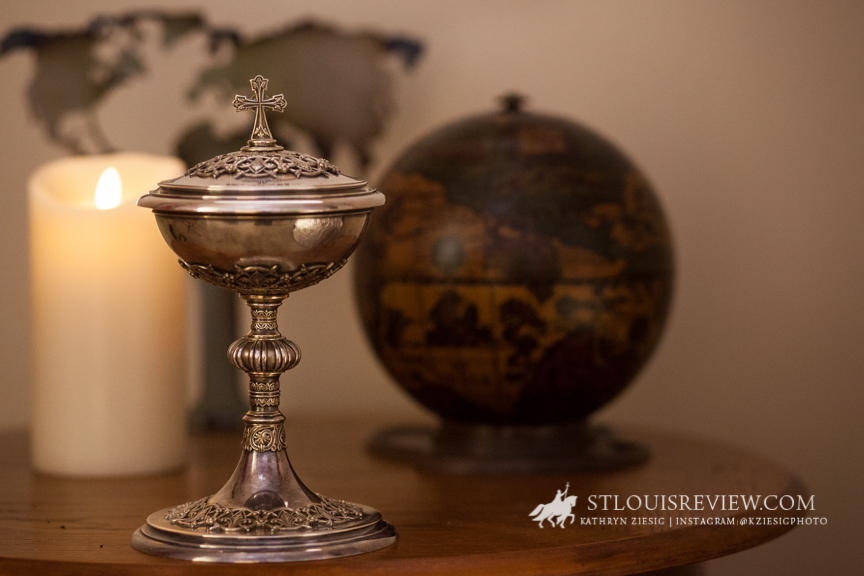
Silver ciborium once belonging to two saints makes its way back to its first U.S. home
Two saints, Caribbean pirates and faith-filled Religious of the Sacred Heart.
All three — part of a fantastic journey covering five countries on three continents over two centuries — converged at the Sacred Heart Spirituality Forum recently at St. Louis University, delivering a monumental surprise to the St. Louis-based Province of the United States-Canada.
Sister Fernanda Vacas, RSCJ, provincial for the Venezuela province, sent Sister Margot Bremer, RSCJ, to present — and return — a treasure of incalculable significance to the U.S.-Canada province, in honor of its 200th anniversary in 2018.
Sister Sheila Hammond, RSCJ, provincial for U.S.-Canada, received the silver ciborium that St. Madeleine Sophie Barat gave to St. Rose Philippine Duchesne in 1818 for her landmark excursion to the New World, which culminated in St. Louis.
“This gift … is truly a treasure,” Sister Hammond said. “It was such an honor to receive the ciborium, and to hold it in my hands, knowing it had been held by both St. Madeleine Sophie and St. Philippine in the early 1800s.”
The surprise delighted more than 360 RSCJs, associates, teachers and friends from around the world at the Forum’s formal dinner. They cheered loudly and sang, “I thank my God for you,” as Sister Vacas listened on the phone in Venezuela.
In a letter to Sister Hammond delivered by Sister Bremer, Sister Vacas wrote that it was time to return the ciborium “to the province where Philippine lived … to celebrate the ‘Woman Who Always Prayed,’ to celebrate friendship, to celebrate frontiers and to celebrate internationality.”
Until the Spirituality Forum, the ciborium once belonging to two saints was lost to history.
“We didn’t even know it existed,” said Sister Carolyn Osiek, RSCJ, the society’s archivist.
The Venezuela province filled in the blanks of the ciborium’s journey there from Paris via the United States, Cuba and Puerto Rico, though anecdotally only.
“This is all oral tradition; we have nothing in writing except the letter from Venezuela, which was written a few weeks ago,” she said, with a laugh.
Now the sleuthing commences as to the ciborium’s origin and how old of a treasure it might be. For now, the Society knows only the ciborium’s history dating to 1818.
The Journey
February 1818 — Paris
After initial reluctance, St. Madeleine Sophie Barat granted St. Rose Philippine Duchesne’s wish “to found a Society in the New World,” specifically in the huge New Orleans Diocese encompassing the Louisiana Purchase territory of 1804, at the behest of Bishop Louis William DuBourg. St. Barat sent off St. Philippine and four other sisters with items necessary for celebrating Mass, such as the silver ciborium. The sisters left Paris on Feb. 8, then sailed to America aboard the “Rebecca” on March 19, 1818.
May 1818 — Atlantic Ocean, near Cuba
Before the sisters arrived at New Orleans on May 29, pirates blocked the “Rebecca” near Cuba, but then learned the “Rebecca” was an American ship. Perhaps fearing a reprisal, they decided to not board the ship, thereby saving its contents from theft. Thus, the ciborium was saved even before it reached the New World.
September 1818 — St. Charles
After arriving in St. Louis on Aug. 29, St. Philippine and the Sacred Heart sisters were dispatched to St. Charles, where they established the first free school West of the Mississippi River. The ciborium, and everything else, went with them the following year to Florissant and St. Ferdinand. No one knows where the ciborium went after that, whether it stayed in Florissant or returned with them to St. Charles in 1828, or whether it went with St. Philippine in 1827 to City House School in St. Louis or in 1842 to establish a school for Potawatomi girls in Sugar Creek, Kan.. Regardless, it probably was in continuous use holding the Blessed Sacrament.
January 1858 — New York/Cuba
After St. Philippine’s death in 1852, the ciborium resurfaced in 1858 in New York, from where Mother Mary Ann Aloysia Hardey founded the Cuba province. Exactly how the ciborium was used in Cuba is unknown, but it was there for more than 100 years, probably serving its original purpose until being retired at some point. Sacred Heart sisters in Puerto Rico have quizzed former Cuba sisters about the ciborium, but only one even remembers hearing about it, let alone seeing it.
May 1961 — Cuba/Puerto Rico
After the Cuban Revolution in 1959 and Fidel Castro’s rise to power, Religious of the Sacred Heart stayed in Cuba for two years before realizing they could no longer run their schools in that environment. There’s no cloak-and-dagger story such as fleeing sisters smuggling the ciborium to Puerto Rico, where it ended up … and stayed for two months.
July 1961-July 2017 — Venezuela
With the foundation of the Venezuela province, the ciborium was gifted there, continuing its journey south. In 1974, the Venezuela province added a new twist to the sisters’ ministries by opting to serve the poor and downtrodden in the country. The provincial sent the ciborium along with the sisters on their new mission. “That’s where it stayed until the provincial of Venezuela gave it to our province, bringing it back home,” Sister Carolyn Osiek, RSCJ, the society’s archivist, said.
Two saints, Caribbean pirates and faith-filled Religious of the Sacred Heart. All three — part of a fantastic journey covering five countries on three continents over two centuries — converged … ‘Truly a treasure’
Subscribe to Read All St. Louis Review Stories
All readers receive 5 stories to read free per month. After that, readers will need to be logged in.
If you are currently receive the St. Louis Review at your home or office, please send your name and address (and subscriber id if you know it) to subscriptions@stlouisreview.com to get your login information.
If you are not currently a subscriber to the St. Louis Review, please contact subscriptions@stlouisreview.com for information on how to subscribe.


